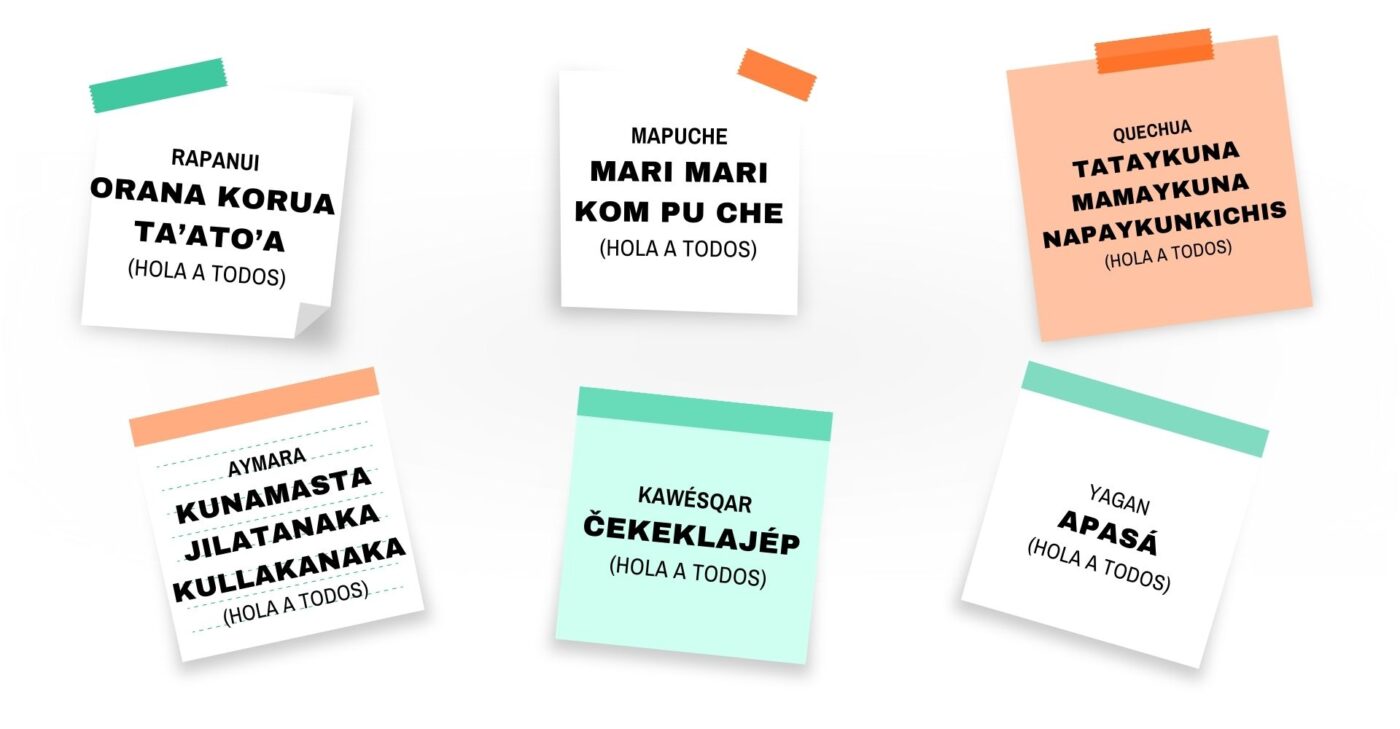When we speak of Latin America, we think of a part of the American continent deeply connected to its cultural roots. In many areas we can find great diversity of indigenous people. This results in multilingual regions in most of the Latin American countries. Is this cultural richness what makes the continent so unique.
Chile is not an exception, with at least six indigenous languages that are still spoken today. Linguistic diversity is fundamental for us, as a society, to develop complex communications, as well as to broaden our worldview. Each language has its own way of correlating with reality. This leads us to learn different perspectives through different languages.
This linguistic diversity has also been incorporated into marketing, as another way to expand and keep these languages present in our daily life. Do you know which indigenous languages are spoken in Chile? And how can you put this linguistic diversity into practice? In this blog we’ll tell you all about it!
Chile’s indigenous language

Latin America is made up of diverse indigenous cultures and, therefore, diverse languages enrich each region. According to Atlas Sociolingüístico de Pueblos Indígenas en América Latina, there are still 499 indigenous languages in use today. But this number changes from year to year, as many of these languages do not have enough speakers to keep them alive.
Nowadays, 6 indigenous languages are spoken in Chile. These languages include: Aymara, Quechua, Rapa Nui, Kawésqar, Yagán and Mapuzugun. Although some are still undergoing revitalization programs to keep them in use and alive.
In addition to these six languages, there are two more that are not yet recognized as spoken languages by the law. The first is Ckunza, belonging to the Atacameño or Lickanantay people. This community is working hand in hand with the Ckunza Language Council to revitalize their language. The second is the Selk’nam community, which is still seeking recognition not only for its language, but also for its people.
Now, are these languages official? Although these languages are recognized within the country they are not officially recognized by region. This fact is still being debated, as many hope for a multilingual country. If this were the case, what languages would be spoken in each region?
Aymara language
This agglutinating indigenous language, belonging to the Jaqui family, originated from settlers near Lake Titikaka and the South Andean highlands in the 12th century. Later, they colonized the east and west valleys close to the Andes mountains. This language is spoken in the regions of Arica and Parinacota, Tarapacá, Antofagasta, Coquimbo, Valparaíso and Metropolitana.
Quechua language
This is a complex language; some consider it a family of languages while others consider it a single language with several dialects. Once the official language of the Inca empire, it currently has more than eight million speakers with the largest number concentrated in Peru. In Chile it’s spoken in the regions of: Arica and Parinacota, Tarapacá, Antofagasta, Coquimbo, Valparaíso and Metropolitana.
Rapa Nui language
Rapanui language has managed to survive despite being threatened by several historical events. The Chilean government enacted the Ley Pascua during 1966 to revitalize and protect this language. It currently has 9,399 speakers, most of them from the island located 3,700 kilometers from the American continent in the Polynesian archipelago, within the Valparaíso region.
Mapuche language
The language of Mapuche people: Mapuzungun is spoken in both Chile and Argentina. And its peak occurred during the Spanish conquest. Nowadays, it is spoken from the Choapa River to Chiloé within Chilean territory. It has several dialects such as Pewenche, Lafkenche, Williche, among others. According to official data, it has more than one million speakers. Mapuzungun it’s also spoken in the regions of Coquimbo, Valparaíso, Metropolitana, O’Higgins, Maule, Biobío, La Araucanía, Los Ríos, Los Lagos and Aysén.
Yagán language
Spoken by the canoeist people of the same name. Yaganes historically inhabited the territory of Cape Horn and Tierra del Fuego. At their peak they had 5 different dialectal varieties. With a population of 1,600 people their language is still spoken in the Magallanes region.
Lengua Kawésqar
An agglutinating language that also comes from an indigenous canoe community. Kawésqar once inhabited the channels located between the Taitao peninsula and the Strait of Magellan. Currently, its population is 3,488 people and its language is spoken in the Magallanes region.
Chile’s indigenous community
Chile has a wide linguistic diversity. Indigenous languages have managed to survive and speakers continue to fight for their recognition. All these languages have specific government programs to improve their revitalization, but this is a difficult task due to their actual condition. It’s important to give them the importance they deserve so their world’s views are preserved.

Why is it important to include indigenous languages in marketing?
Have you ever heard the phrase “language shapes our realities”? Well, this is not far from reality. The words we use daily do impact the way we see and relate to the world. That is why, when transmitting a message, we must consider the language we will communicate with. Why is it important? When planning an advertising a marketing campaign, it is best to express ourselves in an inclusive and linguistically diverse way so that the message reaches everyone.
While nowadays there is a lot of multilingual marketing, not the same happens with plurilingual marketing. So, plurilingual marketing should become part of our focus. What do we mean by this? Including indigenous languages will not only make your advertising campaign reach more people, but also generate a social effect. According to UNESCO, a language dies at least once a week. Given this shocking scenario, marketing also works as an agent of change, being used as a channel to promote diversity.
When creating a campaign, don’t forget to consider plurality. It will not only make your marketing inclusive, but also promote linguistic diversity and the rights of these communities. Now that you know the importance, remember that through these small actions we can also generate a big impact.




